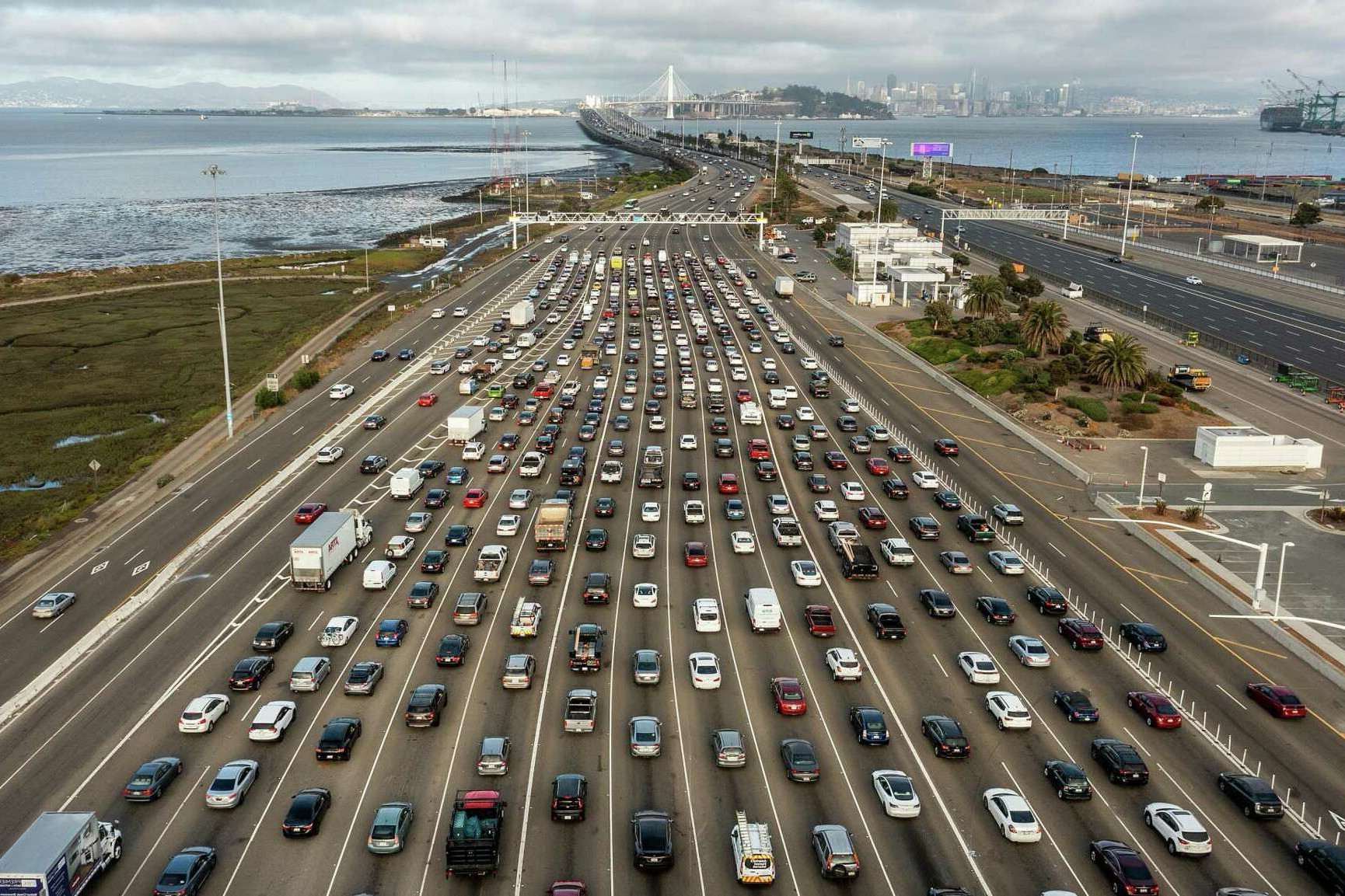
Ever wondered why Bay Bridge traffic seems endless? You're not alone. The Bay Bridge, connecting San Francisco and Oakland, is a vital artery for thousands of commuters daily. But what makes it so congested? From its history to its daily usage, many factors contribute to the traffic woes. Did you know the bridge handles over 260,000 vehicles each day? That's a lot of cars! Plus, ongoing maintenance and occasional accidents only add to the delays. Understanding these elements can help you navigate this iconic structure more efficiently. Buckle up as we dive into 30 fascinating facts about Bay Bridge traffic.
Bay Bridge Traffic: A Daily Challenge
The Bay Bridge, connecting San Francisco and Oakland, is a vital artery for commuters. However, navigating its traffic can be a daunting task. Here are some fascinating facts about Bay Bridge traffic that might surprise you.
-
The Bay Bridge carries over 260,000 vehicles daily, making it one of the busiest bridges in the United States.
-
Morning rush hour typically peaks between 7:00 AM and 9:00 AM, with traffic often backing up for miles.
-
Evening rush hour is even worse, usually peaking between 4:00 PM and 6:00 PM.
-
The bridge has a total length of 4.46 miles, but during peak hours, it can take over an hour to cross.
-
The bridge's toll plaza has 18 lanes, but even this massive setup struggles to handle the volume of traffic.
-
Tolls are collected only in the westbound direction, heading into San Francisco.
Historical Context of Bay Bridge Traffic
Understanding the history of the Bay Bridge can provide insight into its current traffic woes.
-
The Bay Bridge opened on November 12, 1936, and was considered an engineering marvel at the time.
-
Initially, the bridge was designed to handle 70,000 vehicles per day, far less than today's traffic.
-
The bridge was originally a double-deck structure, with cars on the upper deck and trucks and trains on the lower deck.
-
In 1958, the lower deck was converted to handle more car traffic, eliminating the train tracks.
-
The Loma Prieta earthquake in 1989 caused a section of the upper deck to collapse, leading to significant traffic disruptions.
-
A new eastern span was completed in 2013, designed to be more earthquake-resistant.
Traffic Management and Innovations
Efforts to manage and improve Bay Bridge traffic have led to various innovations and strategies.
-
The FasTrak electronic toll collection system was introduced in 2000 to speed up toll processing.
-
Carpool lanes, known as High-Occupancy Vehicle (HOV) lanes, are available during peak hours to encourage carpooling.
-
The bridge has a dedicated bus lane to facilitate public transportation.
-
A bike and pedestrian path was added to the new eastern span, although it doesn't yet connect to San Francisco.
-
The Bay Area Toll Authority (BATA) continuously monitors traffic patterns to optimize toll plaza operations.
-
Variable message signs provide real-time traffic updates to drivers.
Environmental Impact of Bay Bridge Traffic
Heavy traffic on the Bay Bridge has significant environmental implications.
-
The bridge's traffic contributes to air pollution in the Bay Area, with vehicles emitting large amounts of CO2.
-
Efforts to reduce emissions include promoting electric vehicles and public transportation.
-
The bridge's lighting system was upgraded to energy-efficient LED lights in 2013.
-
Carpooling and public transportation are encouraged to reduce the number of single-occupancy vehicles.
-
The bridge's design includes features to minimize its environmental footprint, such as stormwater treatment systems.
Future Prospects for Bay Bridge Traffic
Looking ahead, various projects and proposals aim to alleviate Bay Bridge traffic.
-
Plans are underway to extend the bike and pedestrian path to connect with San Francisco.
-
The introduction of congestion pricing is being considered to manage peak-hour traffic better.
-
Autonomous vehicles could play a role in reducing traffic congestion in the future.
-
Expansion of ferry services across the Bay is being explored as an alternative to bridge traffic.
-
Improvements to public transportation infrastructure, such as BART, aim to provide more reliable alternatives to driving.
-
The Bay Area Metropolitan Transportation Commission (MTC) is studying long-term solutions to address traffic congestion.
-
Community input and collaboration with local governments are crucial for developing effective traffic management strategies.
Final Thoughts on Bay Bridge Traffic
Bay Bridge traffic is a wild ride. From the early morning rush to late-night jams, it’s a constant challenge for commuters. Knowing the busiest times can help you plan better. Weekdays see the heaviest traffic, especially during peak hours. Weekends aren’t much better, with tourists adding to the mix.
Accidents and construction can throw a wrench in your plans, so always check traffic updates before heading out. Carpool lanes and public transportation are great options to beat the gridlock.
Understanding these facts can make your commute a bit smoother. Whether you’re a daily commuter or an occasional traveler, being prepared is key. So next time you’re heading over the Bay Bridge, keep these tips in mind. Safe travels!
Was this page helpful?
Our commitment to delivering trustworthy and engaging content is at the heart of what we do. Each fact on our site is contributed by real users like you, bringing a wealth of diverse insights and information. To ensure the highest standards of accuracy and reliability, our dedicated editors meticulously review each submission. This process guarantees that the facts we share are not only fascinating but also credible. Trust in our commitment to quality and authenticity as you explore and learn with us.
